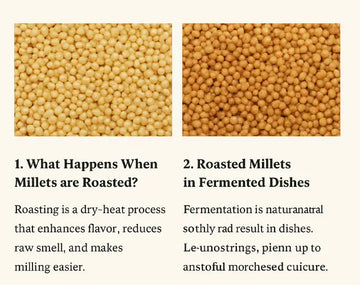Our Turmeric Powder is free of adulteration – Buy and test it.
 Turmeric is a powder with bright yellow color and harbors a wide range of health benefits, including functioning as an anti-carcinogenic and anti-inflammatory. However, most manufacturers tend to tamper with it, releasing a substandard product in the market. Here is a close look at the key things you need to know about turmeric adulteration.
There is widespread adulteration of Turmeric
This spice is synonymous with the South East Asian communities and is one of the most loved spices, making it a prime target of adulteration. The majority of the altering comes in the form of inorganic components like Sudan red, metanil yellow, lead chromate, among others.
As the demand for Turmeric continues to increase, marketers appear to be enjoying a boon even as it proves a bane for consumers. The issue of adulteration is rampant with the powdered form of Turmeric because it can easily mix with other ingredients. You may not be in a position to visually tell apart good quality turmeric powder from one that has undergone adulteration.
There are three different ways in which adulteration often manifests:
Turmeric is a powder with bright yellow color and harbors a wide range of health benefits, including functioning as an anti-carcinogenic and anti-inflammatory. However, most manufacturers tend to tamper with it, releasing a substandard product in the market. Here is a close look at the key things you need to know about turmeric adulteration.
There is widespread adulteration of Turmeric
This spice is synonymous with the South East Asian communities and is one of the most loved spices, making it a prime target of adulteration. The majority of the altering comes in the form of inorganic components like Sudan red, metanil yellow, lead chromate, among others.
As the demand for Turmeric continues to increase, marketers appear to be enjoying a boon even as it proves a bane for consumers. The issue of adulteration is rampant with the powdered form of Turmeric because it can easily mix with other ingredients. You may not be in a position to visually tell apart good quality turmeric powder from one that has undergone adulteration.
There are three different ways in which adulteration often manifests:

 Turmeric is a powder with bright yellow color and harbors a wide range of health benefits, including functioning as an anti-carcinogenic and anti-inflammatory. However, most manufacturers tend to tamper with it, releasing a substandard product in the market. Here is a close look at the key things you need to know about turmeric adulteration.
There is widespread adulteration of Turmeric
This spice is synonymous with the South East Asian communities and is one of the most loved spices, making it a prime target of adulteration. The majority of the altering comes in the form of inorganic components like Sudan red, metanil yellow, lead chromate, among others.
As the demand for Turmeric continues to increase, marketers appear to be enjoying a boon even as it proves a bane for consumers. The issue of adulteration is rampant with the powdered form of Turmeric because it can easily mix with other ingredients. You may not be in a position to visually tell apart good quality turmeric powder from one that has undergone adulteration.
There are three different ways in which adulteration often manifests:
Turmeric is a powder with bright yellow color and harbors a wide range of health benefits, including functioning as an anti-carcinogenic and anti-inflammatory. However, most manufacturers tend to tamper with it, releasing a substandard product in the market. Here is a close look at the key things you need to know about turmeric adulteration.
There is widespread adulteration of Turmeric
This spice is synonymous with the South East Asian communities and is one of the most loved spices, making it a prime target of adulteration. The majority of the altering comes in the form of inorganic components like Sudan red, metanil yellow, lead chromate, among others.
As the demand for Turmeric continues to increase, marketers appear to be enjoying a boon even as it proves a bane for consumers. The issue of adulteration is rampant with the powdered form of Turmeric because it can easily mix with other ingredients. You may not be in a position to visually tell apart good quality turmeric powder from one that has undergone adulteration.
There are three different ways in which adulteration often manifests:
- Incidental – Occurs from accidental contamination associated with animal droppings, pesticide residues, and insect larvae.
- Intentional – This happens when one deliberately mixes turmeric powder with chemical compounds such as chalk dust, sawdust, industrial dyes, and sand.
- Leaching – Manifests when metals such as tin, arsenic, and lead leach into the powder.

- As difficult as it is to detect adulteration visually, you can conduct different types of tests to ascertain that you have a superior product. These tests are explained below:
- Palm test – A small amount of good quality turmeric powder is supposed to stick on your palm when you rub it and tilt your palm perpendicularly. If most of it falls, there is a high chance that it could have been mixed with other substances.
- Color test – The color test involves investigating the visual and physical appearance of your turmeric powder. Even though this may be tricky to tell for most people, genuine turmeric powder is supposed to be deep orange to bright yellow color.
- Smell test – Good quality turmeric has a distinct and mild earthy aroma, whereas a bad one cannot produce such. In most cases, it will have a smell that does not match that of Turmeric as you may have been used to.
- Turmeric water test – Add a teaspoon of turmeric powder into a glass of water and let it stand for 20 minutes. Genuine turmeric powder is supposed to settle at the bottom of the glass while the water remains clear. We performed this test and you can check the video above.
- It could contain lead, which is highly poisonous and damages the delicate nerve cells.
- Turmeric adulteration sometimes happens using metanil yellow, which is not approved as a food additive. It is hazardous and causes cancer, destroys the gastrointestinal tract and the liver.
- When turmeric adulteration is done using acid orange 7, you face the risk of changes in your blood chemistry and associated physiological disorders
Tags:
Related Articles





